volume18 1949-1950
| série: | Tarzan Sunday Pages |
| dessinateur / scénariste: | Hogarth Burne |
| éditeur: | Flying Buttress EO 1997 |
| genre: | Aventure |
| classement: | biblio1 |
| date: | 1997 |
| format: | cartonné avec jaquette |
| état: | TBE |
| valeur: | 30 € |
| critère: | **** |
| remarques: | eighteenth and last volume edited by NBM/Flying Buttress (NBM being America's first publisher of graphic novels since 1976, located at New York with imprints such as Flying Buttress Classics Library, Amerotica, Eurotica and ComicsLit) under the supervision of Bill Blackbeard out of a sery of 18 volumes, all being accurate reproduction of the Sunday Pages in their full colour and in full size, each volume has about 52 pages, n.b. the sources of these Sunday pages are mainly from the Los Angeles Times and from the Milwaukee Journal edited by UFS (United Features Syndicate) volume 18 1949-1950 with dust jacket from 16.10.1949 (971) to 17.9.1950 (1019) = 49 pages drawn by Hogarth (the 4 last pages drawn by Lubbers), based on the novel of Edgar Rice Burroughs here is the final volume in NBM's massive undertaking of reprinting the Tarzan Sunday running from Foster to Hogarth, Hogarth outdid himself in this last year before quitting in a disagreement with the syndicate, Blackbeard provides a final salute in his introduction the volume includes following episodes (number of pages): - Tarzan and the Ononoes, part two: 2 - Tarzan and the adventurers: 38 - Tarzan's last hunting:9 1/ introduction by Bill Blackbeard "it's a full house" - many letters from the readers (not always of great interest), finally the full-page size prevailed on half-pages, some readers even asked to publish Celardo and Lubbers pages - some readers also confirmed that ERB illustrations were the best reproductions of any comic strip ever printed (in any case better than the ones published by French editor Soleil) - Hogarth is also greatly honoured for his post-book "Tarzan of the Apes" with the beautiful jungle foliage, apes and ape-man action figures, Hogarth was also the founder of "the School of Visual Arts", further studies are "Dynamic Anatomy" and "Dynamic Light and Shade", no other artist could acceed to this perfect drawing (Hogarth was possibly the Michelangelo of the comic strip) - also included in the introduction is an illustration by Paul Power and Steve Leialoha rendering homage to Hogarth and Burroughs the story: 2/ Tarzan and the Ononoes, last two pages 971+972 victory of the tree-men over the Ononoes, while Tarzan is liberating Barbara and says farewell to his new friends (tree-men, Barbara and the Ononoes maiden) 3/ Tarzan and the adventurers p. 973 to 1010 (38) Tarzan is relaxing with his friends, the Masai and their chief N'Koba, n.b. it seems that Tarzan's friend tribe is now the Masai instead of the Waziri, Tarzan is honoured with a great hunt against Simba the panther and Numa the lion; during this hunt, Tarzan saves the life of two white adventurers: Cleveland and Baker >> p. 974+975 Tarzan's fight against Numa the lion = beautiful paintings and for the first time (page 971) a half-page vignette is introduced the two pseudo-scientists are looking for an herb used to cure malaria, but in fact they are treasure-hunters, a treasure hidden in the Dagombas' land which is forbidden to enter for all strangers n.b. as from page 985 a summary is including again at the top of the new page Tarzan promises to intervene for them with Mabuli, chief of the Dagombas, but without waiting for Tarzan's return, the adventurers penetrate the lake with their ship and are soon assaulted by Mabuli's warriors; finally on Tarzan's request, the attack is avoided and Mabuli agrees to let the white men enter his land but only under Tarzan's supervision Chaka, the witch-doctor of the Dagombas, soon discovers the purpose of Cleveland and Baker and proposes to give them the treasure gold on the condition they help him to get rid of Mabuli while searching for the treasure in the lake, Cleveland's diver tries to drown Rundi, Mabuli's son who is swimming in the lake, but Tarzan happened to hear the aid calls of Rundi and succeeds in saving the life of Rundi following Chaka's treachery, Tarzan is painted with an invisible ink a snake on his chest which will be revealed when contacted with water and researching the cause of Rundi's drowning, the snake's sign appears on Tarzan's chest and he is discredited with the Dagombas who want to sacrify him to the pit of the sacred snakes >> p. 989 Tarzan is striked by Chaka's drugs >> p. 993 Tarzan's fight against the Dagomba warriors >> p. 997 Tarzan's escape after his escape, Chaka and his two white friends decide to eliminate Mabuli by challenging him with the test of the sacred snakes, again by slyness, Mabuli is bitten by the snake while Chaka got unharmed however Tarzan succeeds in saving Mabuli and finds refuge with his loyal Masai warriors and with their assistance, Mabuli's health is restored, the Dagombas are defeated and the two adventures punished >> p. 998 Tarzan's use of the jungle foliage to hide 4/ Tarzan's last hunting p. 1011-1015 by Hogarth (5) and 1016-1019 by Lubbers (4) Tarzan continues his quest towards the Rimba-Azur, there he meets two zoologists trying to capture alive one rhino and one gorilla for the Winchester zoo; Tarzan agreed to help them capture the rhino but not the gorilla as they are his blood-brothers >> p. 1015 the terrible yet magnificent brute of a rhinoceros (last page of Hogarth) after having captured the rhino, Tarzan is advised by little Nkima, the monkey that Bolgani, the giant gorilla has gone mad and Tarzan agrees to also have Bolgani captured; afterwards Tarzan leaves his friends for new adventures which will no longer be the subject of new volumes by ERB >> p. 1016 Tarzan drawn by Lubbers wears now a neck lace and Tarzan's little pet monkey Nkima is back n.b. not much explanation is given about Tarzan's friendship with Rawson the hunter and in that last episode is Tarzan not somehow breaking the law of the jungle? >> anyway another but last beautiful volume of Hogarth's Tarzan with a superb drawing of the jungle foliage, Hogarth's style is now at his best, even more dynamic and lavishly drawn, full of shades, colours and in style giving even more dynamism as before and never matched by any other artist 5/ last note from editor = farewell from Bill Blackbeard the closing of this 18th volume of Tarzan's series is the last one published over a period of 4 years and a half, the classic graphic of the Sunday Pages having been reproduced as close to first-printing newsprint hues (= colours) as possible n.b. the last two pictures in the enclosure are two pages drawn by Lubbers Information about this Tarzan's collection for sale: - New York: Flying Buttress Press, 1993, Hal Foster and Burne Hogarth with some pages of Rubimor and Lubbers hardcover, 10 1/4 X 14 Inches - complete 18 volume collection of the Sunday TARZAN Comic-Strips that ran from 1931 to 1950 including volume 15B drawn by Rubimor, this series ran from 1993 to 1997 an incredible collection that is nearly impossible to complete these days (many volumes are very scarce in commerce) each volume retains the original price ranging from $35.00 to $37.50 on the rear DJ panel, introduced by Bill Blackbeard, the series editor value: $ 2000.- - William Elsworth Blackbeard (April 28, 1926 – March 10, 2011), better known as Bill Blackbeard, was a writer-editor and the founder-director of the San Francisco Academy of Comic Art, a comprehensive collection of comic strips and cartoon art from American newspapers, this major collection, consisting of 2.5 million clippings, tearsheets and comic sections, spanning the years 1894 to 1996, has provided source material for numerous books and articles by Blackbeard and other researchers >>> see also the Smithsonian Collection of Newspaper Comics |
| couvertures: | 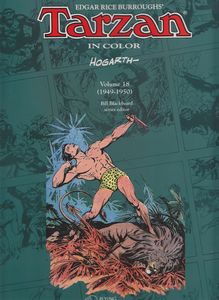 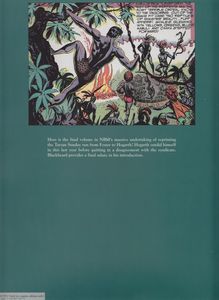 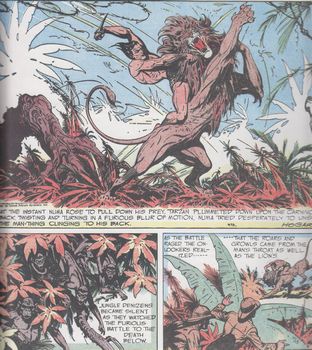 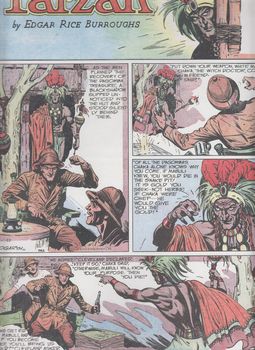 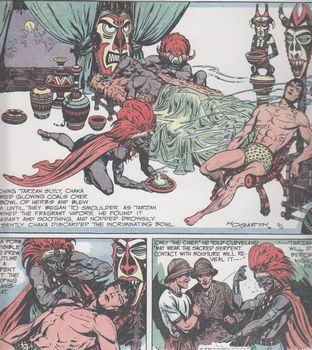 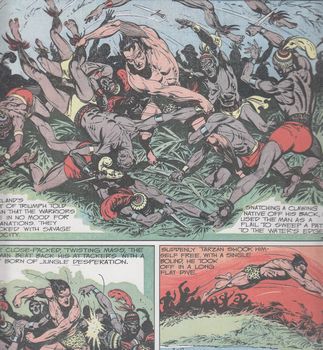 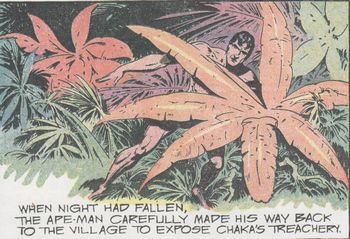 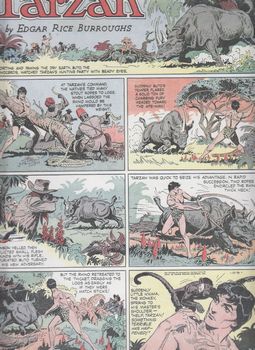 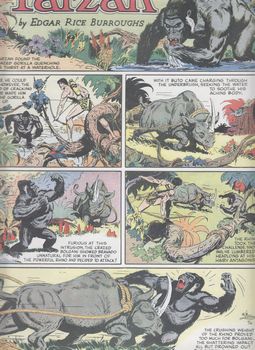 |
Copyright 2008 - 2025 G. Rudolf
